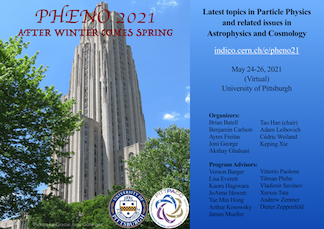Speaker
Description
Magnetically charged black holes (MBHs) are interesting solutions of the Standard Model and general relativity. They may possess a “hairy” electroweak-symmetric corona outside the event horizon, which speeds up their Hawking radiation and leads them to become nearly extremal on short timescales. Their masses could range from the Planck scale up to the Earth mass. We study various methods to search for primordially produced MBHs and estimate the upper limits on their abundance. We revisit the Parker bound on magnetic monopoles and show that it can be extended by several orders of magnitude using the large-scale coherent magnetic fields in Andromeda. This sets a mass-independent constraint that MBHs have an abundance less than $4 × 10^{−4}$ times that of dark matter. MBHs can also be captured in astrophysical systems like the Sun, the Earth, or neutron stars. There, they can become non-extremal either from merging with an oppositely charged MBH or absorbing nucleons. The resulting Hawking radiation can be detected as neutrinos, photons, or heat. High-energy neutrino searches in particular can set a stronger bound than the Parker bound for some MBH masses, down to an abundance $10^{−7}$ of dark matter.

